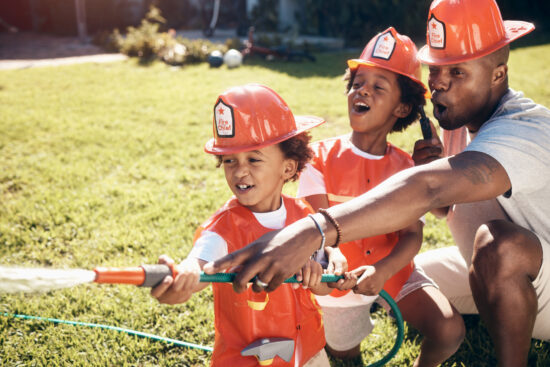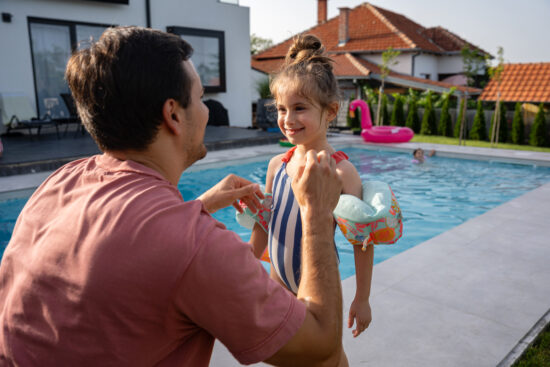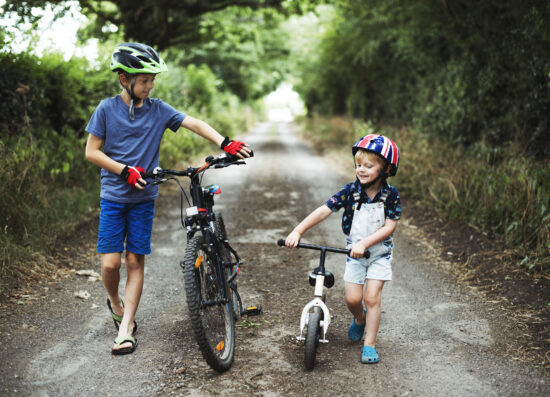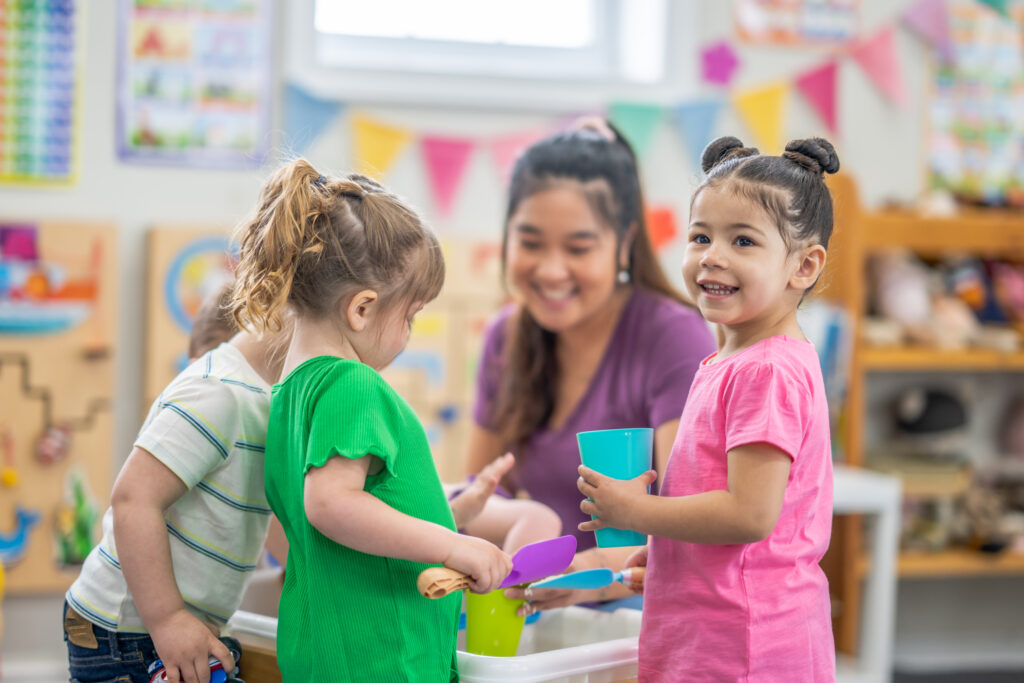Written by: Adrianna Alejandro, Marketing Campaign Manager
Child Safety & Protection Month is a national reminder of how important it is to protect our children from preventable injuries at home and beyond. From busy kitchens to backyard playtime (or from the kitchen to the backyard), child safety at home begins with awareness and a few thoughtful habits that make all the difference.
This month, we’re focusing on three essential areas of child safety at home: fire safety, water safety, and outdoor safety. Each one plays a key role in keeping children protected, whether they’re splashing in the tub, exploring the backyard, or helping cook dinner.
1.) Fire Safety: Create a Family Fire Plan

Household fires can happen in an instant, which is why having a fire safety plan is one of the most important steps families can take. Start by walking through your home together and identifying two exits from every room. Show children how to crawl low under smoke and where to meet outside if you need to evacuate.
Practice fire drills twice a year, just as schools do, so that everyone knows exactly what to do. Keep matches, candles, and lighters out of reach, and always turn off kitchen appliances when not in use. For older children, explain why it’s important not to play with electrical cords or outlets.
Make sure you have working smoke detectors on every floor and test them monthly. If possible, keep a small fire extinguisher in the kitchen and garage, and show older family members how to use it safely. Taking these precautions doesn’t just protect your home; it gives you peace of mind.
2.) Water Safety: Prevent Drowning Before it Happens

Water can be fun for little ones, but it also poses real risks. Whether it’s bath time, swimming, or outdoor play after rain, supervision is key. Drowning can happen silently and in seconds, even in just a few inches of water.
Never leave a child unattended near water, including bathtubs, buckets, and kiddie pools. Always empty containers immediately after use. When around pools or natural bodies of water, designate a “water watcher” whose only job is to keep an eye on the children.
Consider enrolling children in swimming lessons as early as age one, and make sure they understand basic water safety rules, such as not running near pools or swimming without an adult present. For added protection, install pool fences with self-latching gates and teach children that water safety starts with smart choices.
3.) Outdoor Safety: Encourage Play with Awareness

Outdoor play supports healthy development, builds confidence, and encourages curiosity. But it’s important to set up an environment where children can explore safely.
Start by checking play areas regularly for sharp objects, unstable surfaces, or loose equipment. Teach children how to wear helmets when riding bikes or scooters, and ensure they understand safe street-crossing habits.
When spending time outside, apply sunscreen, encourage hydration, and keep an eye on weather conditions. Families can also talk about “stranger safety” in a calm, age-appropriate way — reminding children that it’s okay to say no, trust their instincts, and always tell an adult if something feels uncomfortable.
Building Awareness at Home for Child Safety

Child safety doesn’t have to feel overwhelming. Simple awareness activities can help children understand and remember safety rules in a fun, engaging way.
Try drawing a family fire escape map, role-playing “what if” scenarios like kitchen spills or bike rides, or practicing how to call for help in an emergency. These activities build confidence and make safety a natural part of your child’s daily learning.
As families and educators, we share a common goal: helping children grow, learn, and thrive in a safe and nurturing environment. By taking small steps — like checking smoke detectors, supervising water play, and creating a family safety plan — we can make a big difference in preventing accidents and protecting what matters most. For a comprehensive checklist of home-safety hazards—from fires and falls to poisonings—visit Safe Kids Worldwide’s Home Safety section. It details risks such as carbon monoxide, furniture tip-overs, and unprotected windows in a clear, step-by-step format.
This Child Safety & Protection Month, take a few moments to walk through your home with fresh eyes. The changes you make today could make all the difference tomorrow. Learn more about how Childcare Network practices child safety by scheduling a tour and seeing our programs in action.
Get started by clicking here.



